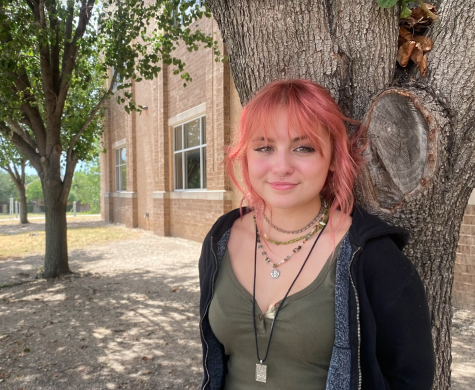AP Seminar students present Team Multimedia project
Professional Communication students have been working on “How To” presentations on a skill or talent of their choice.“Some of the main topics I took from this assignment was that you have to think about what you want to say in the way a child would understand so that everyone can understand,” junior Dhruv Maruvada said.
March 17, 2021
Starting Wednesday, AP Seminar students will get the opportunity to share their specialized research into a specific topic in the form of a TMP, or a Team Multimedia Presentation.
“The main requirement I give students is that they have to choose an issue that requires a specific solution of some kind, and create a presentation arguing for their solution,” AP Seminar teacher Chad Doty said. “Students will have about 8 to 10 minutes to present in groups of 3 to 5 people about their research, the topic, potential solutions, and then they will offer their solution for the problem they have identified.”
The presentation is actually a required, in-class portion of the AP test for AP Seminar, so students will earn official scores based on the data they collect, and the way they present it.
“I think students today must develop really foundational speaking and communicating skills,” Doty said. “Something like the TMP stimulates real world environments where people have to convey complex information in a small amount of time. So, this TMP gives them an opportunity to practice those abilities.”
While this is a group project, each student in a group was tasked with a different “lens”, or aspect of their issue, such as social, political, environmental, or economic.
“Our project was about lack of access to menstrual products and other issues related to menstrual poverty,” junior Shiori Harima said. “My lens was environmental so I looked into menstrual waste management and biodegradable products. I learned a lot about time management and trusting group members to distribute work equally and how to write a research paper and research for one.”
With the requirements leaving room for essentially any focus, students had room to highlight an issue that truly spoke to them. Sophomore Ashvath Kumar’s group did so by looking into Puppy Mills’ effect on America.
“The individual lens that I looked into was economic, where I researched if Puppy Mills were beneficial for the economy or not and what are the possible solutions/alternatives that can be implemented,” Kumar said. “I learned that puppy mills not only drained the economy because of the mess the government and private organizations have to clean up but also how they hurt the welfare of these animals. A struggle I faced was during the research phase where I had to find authentic and academic journals for a quality paper. I had to read many articles and pick only a few out of the many that would help my research.”







